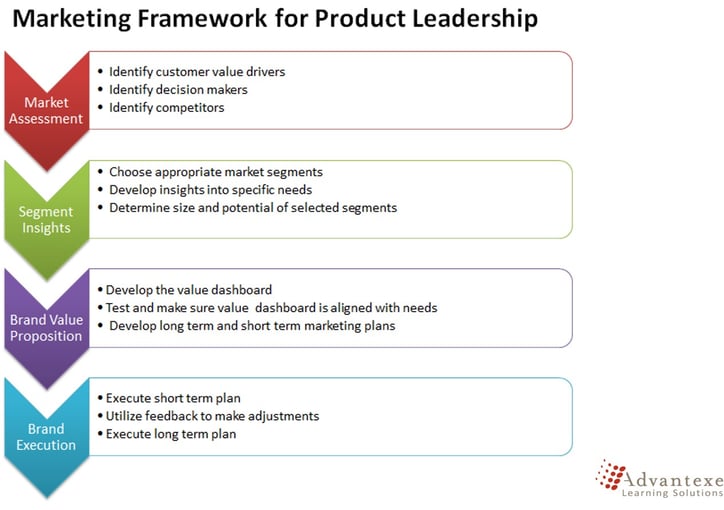
Each week, Advantexe Learning Solutions delivers simulation-centric learning experiences in the area of business acumen to hundreds of participants around the world. Our business simulation workshops provide these participants with the opportunity to learn about the elements of business acumen in a realistic learning environment by giving them chance to run their own simulated businesses. Some of the key learning points include formulating and executing strategy, financial management, supply chain management, manufacturing, and of course marketing.
During a workshop I was facilitating yesterday, one of the teams running their own simulated company was executing a pure product leadership business strategy. As part of their plan, they invested significantly in R&D to make sure they have the most robust product portfolio in their industry. They were very successful in terms of bringing their new innovative products to market, but stumbled when it came time to launch their new innovative products to their customers. One of the reasons is that in the real world, their company is very conservative and doesn’t invest in marketing.
They approached me for some help and specifically requested some information on best practices for a product leadership go-to-market strategy. I shared with them some basic marketing models and sat with them for about 30 minutes conducting an in-the-moment learning laboratory. One of the major things that we discussed is that launching and going to market with new, innovative products is different than going to market with other strategies like a customer focused strategy or a low price strategy.
I sketched out a marketing framework, tools, questions, and a process for revitalizing their strategy. The following is a cleaned up version of that model and a short discussion:

Market Assessment
The first, and most critical, step of this process is assessing the market. In this step, you want to make sure that you understand your customers, their value drivers, why they buy, and your market competition.
Segment Insights
The second step is to choose the right customers for your value proposition. One of the most important things business organizations must do in the global market place is to make sure they choose the right customers by understanding their needs and how big the market can be.
Brand Value Proposition
The third step is developing the value dashboard and making sure that the value dashboard is aligned with customer needs. If you need a quick refresher on the value dashboard concept, please review this previous blog. In addition, this is where you develop your short term and long term marketing plans.
Brand Execution
The final phase is the brand execution, and this needs to be flawless. Starting with the short-term plan, you want to make sure that you are correct on your assumptions about your customers. If not, make the necessary adjustments quickly. After the short term plan has successfully been executed, you then evolve into the long term plan, and of course check along the way to make sure that your assumptions are correct and that the market dynamics haven’t changed too much. While sticking to strategy is important, it’s also important to make the right adjustments.




